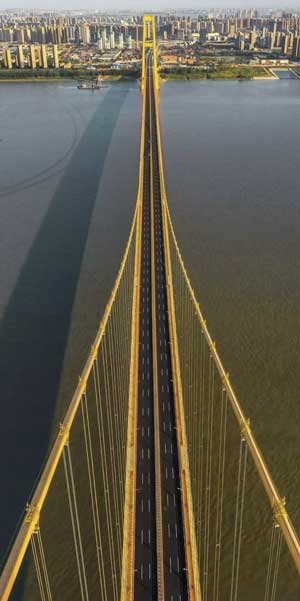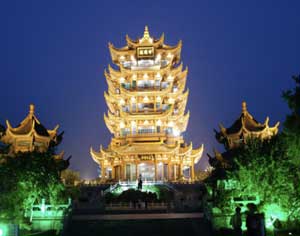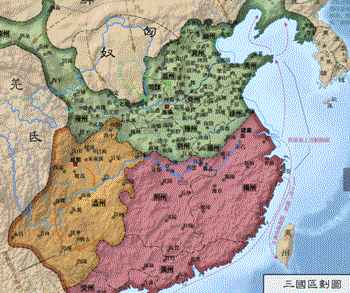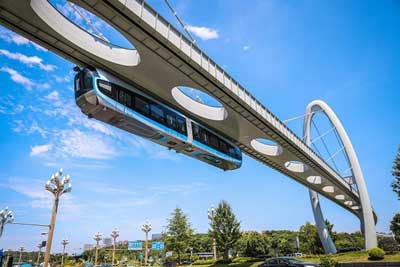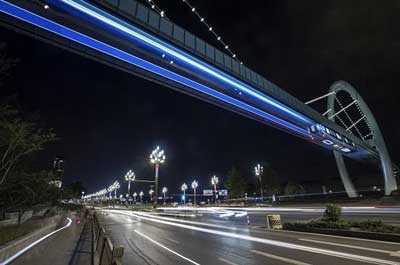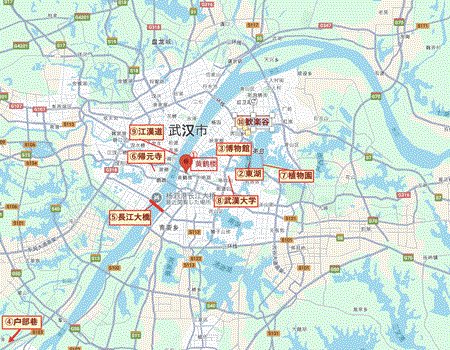>Top 2. Details of Five Trends Report:
- 40% of the mileage drien in Europe could be covered by autonomous vehicles in 2030:
- Our forecasts suggest that by 2030, more than one in three kilometres driven could already involve sharing concepts. At the same time, user preferences will move more towards autonomous mobility. We calculate, based on mileage, that by 2030, the share of autonomous driving in overall traffic may rise to as much as 40%. Developments in Europe and the US are expected to happen at a roughly parallel pace. In China, by contrast, the proliferation of shared and autonomous mobility could happen faster than in the Western world. This would make China the leading market for the transformation of the automotive industry.
- External factors:
- Our mobility behaviour will change radically:
As soon as the legal questions have been clarified and the main technological hurdles have been overcome, the percentage of shared and autonomous mobility in terms of overall road traffic will rise significantly. Our forecasts suggest that by 2030, more than one in three kilometres driven could already involve sharing concepts. At the same time, user behaviour will move more and more towards autonomous mobility. Here, PwC Autofacts calculates – again based on mileage – that by 2030 this may even rise to as much as 40%. Developments in Europe and the US are expected to happen at a roughly parallel pace.
In China, by contrast, the penetration of shared and autonomous mobility will happen faster than in the Western world. This could make China the leading market for the transformation of the automotive industry.
- More people will travel more kilometres:
Due to rising population figures and higher mobility demands, mileage will continue to increase. At the same time, given that driving will be easier, safer and cheaper, general mobility trends will move even more strongly in the direction
of individual mobility. In addition, individual transport could become an option for groups of people who have not had access to transport at all in the past,
such as people with physical disabilities.
Finally, another factor here, is the rise in mileage due to empty journeys made by autonomous vehicles. PwC Autofacts therefore assumes that personal mileage in Europe could rise by 23% by 2030 to 5.88 trillion kilometres. Forecasts predict an increase of 24% in the US and 183% in China.
- The car of the future will be used much more intensively:
Autonomous – and in particular – shared-autonomous vehicles will in the future be far better utilised in terms of capacity than is the case with traditional vehicle use today. The annual mileage will therefore rise dramatically. As a result, the cars will have to be replaced much sooner – even though their active lifetime mileage will increase. The assumption that the lifetime mileage of future cars will be higher has much to do with autonomous and connected driving resulting in fewer accidents. Maintenance and repair costs will drop and lower accident rates will mean that cars will be able to travel many more miles.
- Effects on the automotive value chain:
- The comprehensive and rapid reorganisation of the automotive sector after 2025 will have far-reaching consequences for the entire industry and its value chains. Elementary structures and attitudes will have to change fast in order to cope with the developments by 2030 and beyond.
- If they want to remain successful, both manufacturers and suppliers will have to offer user-oriented innovations. All these trends are likely to become increasingly apparent between 2020 and 2025 – which means that these are decisive years for manufacturers and their suppliers.
- By 2030 it is expected that Europe's vehicle inventory will reduce from 280 million to 200 million vehicles.
- The vehicle inventory will fall significantly in some markets:
In light of the increased utilisation of the fleet, fewer vehicles will be required in the future. PwC Autofacts estimates that the inventory in Europe of currently just over 280 million vehicles could drop by 2030 to around 200 million. This would be a decrease of over 25%. For the US, we forecast a reduction of 22% to 212 million vehicles. Due to the different market situation in China, the inventory there could grow by almost 50% in the same time period to 276 million vehicles, despite the higher utilisation.
- but vehicle sales will continue to increase:
Despite the falling inventory, vehicle sales will visibly increase. Vehicles that are used in the traditional way will remain in the inventory for a comparatively long time. By contrast, autonomous, and in particular, shared autonomous vehicles will be changed far more frequently, resulting in rising sales figures. Across Europe, new car sales could rise by 34% during the
transformation process from around 18 million to just over 24 million units. For the US, PwC Autofacts assumes that there could be growth of 20% and new car sales of almost 22 million in the year 2030. For China, a rise of over 30% to 35 million units sold is expected.
- Autonomous driving and electrification are mutually beneficial:
The automation of driving (i.e. socalled autonomous driving) will initially increase primarily in narrowly defined and geographically restricted areas – most likely mainly in inner cities and
on highways. This is also due to the fact that the dimensions autonomous and electrified are mutually supportive. For example, autonomous vehicles create a clear case for electrical drive since the “inner city” use case is aimed at just this scenario. One example of this is an automatic charging process that uses inductive charging. The reciprocal effect of these two dimensions results in a positive overall effect. It therefore seems possible that by 2030 there will only be a small, single-digit percentage of pure combustion engines among new car sales in the EU. In this scenario,
more than 55% of new cars will already be fully electrified. Forty percent of new vehicles would still include hybrid drive technologies in combination with combustion engines.
- In a theoretical 100% Robotaxi scenario:
the striking reduction in inventory could more than compensate for the effect of the shorter renewal rate and could lead to a drop in new car sales. In such a scenario, it is calculated that 14% of the existing inventory in the EU could be enough to satisfy the entire mobility demand – realistically, however, many more vehicles would need to be available to cover daily and seasonal demand peaks.
- Over 55% of all new car sales could be fully electrified by 2030:
Companies that invest 25% of their R&D budget in software applications are rewarded with strong growth:
- Rapid redistribution of R&D investment:
It is already clear today that the automotive industry will start to invest less in product range. Within the framework of the Global Innovation 1000 Study2, PwC Strategy& calculated that investment in this field could fall by 19% by as early as 2020. However, this is not necessarily a bad sign. The study came to the overall conclusion that those
companies who invest their R&D budget in software solutions instead of product range are already showing stronger growth than their competitors. This picture also suggests the direction that manufacturers and suppliers need to take. Apart from Tesla, not a single automotive company is ranked in the top 10 of the most innovative companies in the world (although five are ranked
between 11 and 20) – even though the company with the highest R&D expenditure is a German automaker. In total, the R&D spent in the automobile industry decreased by 4% between 2015 and 20163 – and that in an era characterised by digital innovation and transformation.
- Decisions about the long-term structure will be made between 2020 and 2025:
Between 2020 and 2025 in particular, manufacturers and suppliers will be battling against sinking margins while at the same time they will have to invest heavily in customer-oriented innovations. The traditional automakers will have to consider how much they are prepared to invest in mobility services to ward off a potential decline in their core business. At the same time, the rising sales volume of new vehicles demands additional investment in production capacity for the necessary “hardware,” and those companies that implement flexible and scalable concepts now will be in a position to play an active role in shaping the future from 2025.
- Future business models cover the sale and operation of vehicles:
In the future, it will no longer be enough to focus purely on the production and sale of vehicles. Manufacturers and suppliers need to rethink their business model in order to manage the changes across the five dimensions of the "eascy" model. The automotive value chain will no longer finish at the factory door, but will extend across all types of use over the entire lifetime of the vehicle through
its eventual recycling. The customers and target groups of the automotive industry will no longer be just direct buyers of vehicles, but all users of the products – in private and shared usage models. Software-based, direct interaction with every user – supported by the brand experience which is
already such a key feature – will lead to higher revenues over the lifecycle of the customer relationship.
- The focus in on the user:
- Younger, technically savvy generations will be a significant driver in the development of more sustainable and convenient mobilitu solutions in the next few years.
- Different mobility uses:
If manufacturers and suppliers expand their business models to cover “operational” elements, then the classic target figures of the sector – namely vehicle sales and vehicle inventory – will become less important. Even so, it is naturally crucial for companies to know how these two figures will change over the coming years. The mathematical model developed by PwC Autofacts, which is the first to quantify the effects of the five “eascy” dimensions, therefore starts with the user (“persona”). By modelling usage behaviour, it is possible to calculate the individual personal mileage and therefore the overall car mileage in a particular market. From this basis it is easier to predict with greater certainty the vehicle inventory and vehicle sales.In order to model usage preferences within the markets under review, we defined three different segments. These so-called “personas” categorise the population based primarily on their attitudes and openness to various forms of mobility and how they use them. In doing so, some major regional and cultural differences must be considered. Additional distinguishing features within the user groups are the age structure and whether they live in an urban or rural environment. This segment logic also enables us to take into account changes in the percentage of the population in each user group over time.
- Development 2017 to 2030:
The young, technically savvy generation will be a significant driver in the development of more sustainable and convenient mobility solutions in the next few years – and will also characterise the attitudes and behaviour of successive generations. By contrast, people in middle age tend to look at the development of new mobility solutions with a degree of scepticism, at least initially. However, there will inevitably be a shift in the percentage of the population towards personas with a more modern orientation – both in Europe and the US as well as in China. This process is likely to be even quicker and more dynamic in China, where the technological change will enjoy the best cultural and political conditions. By 2030, the percentage of the population of “traditional” users will be in strong decline in China. The establishment of autonomous electric taxis and the widespread electrification of public transport will play a major part in this transformation.
In its urban regions, China will likely have caught up with the US and Europe by 2030 in terms of technological development – and may have even pulled ahead. The varying levels of air pollution in China’s cities (which goes hand in hand with street congestion) is a factor in the move to the introduction of car-sharing and ride-sharing services within a few years in urban settings. These could soon be seen as an equal alternative to traditional forms ofmobility.
- What does futre mobility look ike? Who is mobile and how?:
- Mobility needs and preferences are changing:
The change in the “personas” means that mobility needs will also change in the years ahead. The various “eascy” dimensions each have their own individual drivers. The primary drivers
of autonomous, for example, are time savings and greater safety. Sharing, on the other hand, is aimed first and foremost at the cost factor. Connected and electrified in turn can be seen
as hygiene factors in the automotive transformation. After all, the market penetration of electric vehicles is not initially driven by the market economy demand structure, but is primarily a political and regulatory issue.
The “yearly updates” arise from the high speed of innovation of the other
“eascy” dimensions, especially in the field of “autonomous” and “electric” –fundamental technical improvements are already happening in such quick succession that they can no longer be integrated into the classic model cycles. Instead of the more cosmetic exercise of “model years,” the automotive industry will have to keep bringing out “annual models” using the latest technology – in some cases including the option of retrofitting earlier annual models to bring them up to date.
- Using instead of owning:
Changes in behaviour will characterise the mobility of the future. The breadth and depth of mobility options will increase markedly. This is already being demonstrated by the rising number of suppliers in this segment. Innovative start-ups are fighting for market share with established automotive, transport and logistics companies. There are two different manifestations of shared mobility: car-sharing and ride-hailing.
- Car-sharing vs. ride-hailing:
There are two manifestations of car sharing, namely station-based and free-floating. The basic difference lies in the availability of the vehicles. While station-based car sharing means that the
vehicles can only be collected from predefined stations, the area of availability for free-floating car-sharing reflects the business area of the supplier. Ridehailing, by contrast, is about sharing a journey. This concept is growing in popularity and can no longer be seen as a fringe phenomenon. In 2017, the number of users worldwide is estimated to rise to 338 million. On the whole, there are three different manifestations here:
• Online car sharing agencies to create driving communities
• Online platforms that act as brokers for drivers offering journeys in private cars
• Taxi companies that offer their services via an app
- The customer wants to use autonomous vehicles:
Where does car sharing stand in connection to the autonomous dimension:
in other words, to the automation of driving? In order to be able to give a standardised classification to the level of automation, a stage model of 0 to 5 has been introduced at the national and international level. The German classification comes from the Federal Highway Research Institute [Bundesanstalt für Straßen wesen, or BaSt]
- Which sharing models are available?:
Autonomous vehicles will have a strong positive impact on sharing concepts.
- The primary use case is found above all in car sharing in urban areas. More and more young people in the city have no car of their own and use sharing concepts in combination with public transport.
- Even if it appears that there are strict divisions between the different levels of automation, this is a matter of constant public debate. For example, some automakers see Level 4 as the optimal use case for car-sharing vehicles in a specific geographical area – such as within a particular city. According to this interpretation, a Level 4 vehicle would be allowed to drive autonomously in this area in order to collect customers who have ordered the vehicle “on demand”. Beyond this there are preferred areas of application depending on the level of automation. Vehicles classed as Level 1 to Level 3 are primarily used for overland and highway journeys, as this use case is relatively easier to realise from a technical point of view.
- Technical availability and legal considerations are the bottleneck:
PwC Autofacts assumes that the demand for autonomous vehicles will be different in the large markets of Europe, the US and China. However, customer personas tend to have a positive attitude towards this technology per se in all of these regions. The development is currently limited – apart from technical issues – by a lack of legal principles. Nowadays, there are very few vehicles on the streets that are classified as automation Levels 2 and 3. From a technical point of view,
more manufacturers and vehicles would be in a position to offer these levels, but the legal framework is still unclear. The current assumption is that vehicles with a Level 4 classification will not come on the market until 2022–2023 at the earliest – even though technically speaking the functionalities could be available sooner. Various automakers have already announced vehicles of
Levels 4 and 5.
- Levels of autonomous driving:
- Autonomous and shared:
If you combine the two trend dimensions of shared and autonomous, you get four forms of mobility, namely 1) unshared and not autonomous, 2) already shared but not yet autonomous, 3) still unshared but already autonomous, 4) already shared and already autonomous. The most popular form of transport today is still the self-driven private car (therefore “unshared and not autonomous”).
However, the self-driven shared car (in other words, “already shared but not yet autonomous”) is growing in popularity. The self-driven private car (“still unshared, but already autonomous”) is not yet available on the market, but that could well change within a few years. That would also prepare the way for the self-driving sharing car (“already shared and already autonomous”) and the absolute correlation of the two dimensions autonomous and shared.
- The four manifestations of the mobility of the future:In this form of mobility, car-sharing and
ride-hailing are technically on a par, as neither requires a driver. However, there are still differences in terms of the business model, as the car-sharing user chooses a particular product brand for a particular vehicle, while the ridehailing user is interested in a particular transport service from a particular service provider brand. Individual users will certainly switch between both models, which means there is clear potential for both approaches.
- Urban vs. rural:
It can be assumed that the two shared forms of mobility will find their primary area of application in urban areas. The Robotaxi (“already shared and already autonomous”) is particularly well suited for urban applications. Autonomous vehicles can help to prevent accidents while also reducing congestion, meaning that the efficiency of the transport infrastructure will allow it to absorb the rise in traffic. The use case for private vehicles, whether they are autonomous or self-driven, remains predominantly
in rural areas. The connection to a widespread Robotaxi network will reduce the use of autonomous private vehicles in urban settings. Autonomous private vehicles would tend to be more of a status symbol for those customers who still attach importance to owning their own vehicles.
- Progressive vehicle differentiation:
Despite the changes in the forms of motorised mobility, we are still assuming that there will be progressive vehicle differentiation in terms of size and segment. Shared vehicles will be found in both the premium and the volume segments, but due to the primarily urban area of application these are most likely to be smaller vehicles with fewer seats. The autonomous private vehicles will, by contrast, tend to consist of larger cars, especially those from the premium sector.
With the car of the future, however, it will not just be a matter of the shared and autonomous dimensions, but also connected and electrified. Due to the rapid development of electrical drive systems, it can be assumed that the vast majority of Level 4 and 5 autonomous vehicles will be e-cars. These will also show an ever greater degree of connectivity – partly because this will be a prerequisite for widespread, autonomous driving. In addition, the connected car dimension covers various vehicles and connected services. For a comprehensive insight into this dimension, please refer to the Digital Auto Report produced by Strategy&.
- How is the global automotive market changing?
- Structural foundation of the market model:
Using the notion of personal mileage as a base, we have calculated the percentage of electric vehicles that will make up the overall total of new car sales. We initially studied the pooling factor, which expresses the average occupancy per vehicle (we explain the pooling factor in more detail later in this document). This factor helps us to turn personal mileage into vehicle mileage. In turn, that enables us to determine the inventory required for the annual mileage. The turnover rate of vehicle inventory for individual forms of mobility and the changes in that inventory allow us to calculate the new car sales required for the EU, the US and China. The increase in shared and autonomous forms of mobility and the associated changes in levels of automation have a positive effect on possible electrification scenarios.
- Mobility use will change:
The foreseeable developments of the social personas show that autonomous and shared forms of mobility will become much more prevalent by 2030. Not only will this have an impact on driving styles, but also who the vehicles will actually belong to in the future.
- Europe:
Less than 1% of all journeys in Europe are currently made using sharing services. With a compound annual growth rate (CAGR) (2017–2030) of over 20% by 2030, this percentage will increase sharply and could reach more than 10% of mileage travelled by the second half of the 2020s. Vehicles that have at least Level 4 classification could come on the market from around 2022. The firstof these fully automated cars may be aimed primarily at sharing concepts, since that is, as previously described, their preferred area of application. This will give a huge boost to sharing services, as the “human cost factor” will no longer apply. Between 2022 and 2030, the market share of autonomous shared concepts could increase on average by over 70% per year – and thus make up more than 25% of mobility forms by 2030. According to our prognoses, by then not even half of all vehicle mileage will be covered in a classic, self-driven private car. Autonomous forms of mobility could in the meantime account for more than 40% of all vehicle mileage.
- US:
In the US just over 1% of personal vehicle mileage is currently covered through sharing concepts. In 2021 that could be more than 5% and in 2030 as much as 33.5%. Almost 10% could then shift to self-driven shared vehicles and almost 24% to autonomous shared vehicles. Moreover, by the year 2030, almost 36% of personal mileage completed in the US could be in autonomous vehicles.
- China:
The percentage of shared vehicles is likely to rise even faster in China. There are already restrictions in some cities on the registration of new vehicles, which is bound to have a positive impact on the use of shared concepts. We consider it possible that in 2030 more than 45% of all personal mileage will be covered using shared vehicles. Due to the high level of acceptance and demand for autonomous vehicles, China will see the fastest adoption. In 2030, almost half of all miles travelled could be in 0 autonomous vehicles.
- What are the likely secnarios?
- Downside scenario:
Future forms of mobility are caught between various factors, which cannot be predicted with any great accuracy. Both legal and technical conditions are changing all the time, which leads to a certain amount of latitude in the adaption of new forms of mobility. Customer attitudes towards and acceptance of autonomous and shared vehicles depend on future developments.
It is possible to confirm a clear movement towards autonomous and shared, but unforeseeable key events, such as a fatal accident due to technical failure, could have a long-term impact on the levels of acceptance and demand. PwC Autofacts has therefore decided to present both an upside and a downside scenario. The weaker scenario assumes, depending on the region and the country, a penetration of 10 to 15% of vehicles using autonomous technology. In this scenario, the technical and legal principles and levels of customer acceptance are not covered in any great detail.
- Upside scenario:
The upside scenario, on the other hand, assumes an extremely high adoption rate. In this case, more than 60% of all personal mileage could be covered in autonomous vehicles by 2030. Neither customer demand nor legal and technical requirements pose any obstacles to the development of new forms of mobility.
- Both personal mileage and vehicle mileage will increase:
Personal mileage and vehicle mileage represent a key point of our model.
The correlation between these two figures – as referred to briefly above – is determined by the average occupancy rate of a vehicle. With regard to the issue of shared and autonomous, we describe this as the pooling factor. This stands for the higher occupancy rate of a shared
vehicle (such as the uberPOOL). The essential starting figure for describing mobility in a country is personal mileage. Divided into the forms of mobility dictated by the usage behaviour of the personas, the mileage forms the basis for calculating vehicle inventory and also indirectly for calculating the number of new car sales. Reasons for the rise in personal mileage include population growth and a rise in the motorisation rate as well as changes in relative and absolute mobility costs. Forecasts for these and other macro and socio-economic factors determine the plausibility of the trends, assuming largely stable economic progress in the three regions examined in the study. More people can participate in motorised individual transport through autonomous and shared vehicles. Elderly people, those with physical disabilities, population groups on low incomes and those without a driving licence – especially children and young people – can actively participate and thus contribute to the rise in personal mileage.
- In 2030 the vehicle mileage:
- Europe:
in Europe could reach 4.2 trillion kilometres.
- US:
Currently almost 4.7 trillion passenger vehicle kilometres are travelled in the US each year.
At an average occupancy rate of 1.3 persons per vehicle that makes a total annual mileage of 3.59 trillion passenger vehicle kilometres. The vehicle mileage could rise as high as six trillion kilometres.
- China:
Currently, the mileage in China is still a long way behind the levels in Europe and the USA.
Personal mileage is around 3.0 trillion kilometres. The mileage is set to increase sharply in the next few years and could well overtake the level of the US by 2030.
- The intensity of vehicle use will increase:
In order to calculate inventory and new car sales, however, further figures are
required – namely the annual mileage of a vehicle and the mileage over the
entire lifetime of the vehicle through to scrapping. These two figures give the replacement frequency for vehicles.
- The mileage will increase for all four forms of mobility over time. The reasons for this are advancing electrification and the associated simplification of the drive train. The need for maintenance and the accident rate will reduce for the vehicles of the future. This means a reduction in the probability of malfunction during the planned mileage.
- In addition to the total mileage, the annual mileage is the second relevant figure in consideration of the turnover rate. Annual mileage will vary considerably, depending on the form of mobility. Shared vehicles will be used far more than private vehicles and therefore have a higher annual mileage. If this effect is combined with the technology of autonomous vehicles, it leads to even greater usage and a further increase in the annual mileage. As well as the increased use of autonomous driving concepts, empty journeys – between individual uses – will contribute to the significant rise in mileage. Both shared and private autonomous vehicles are able to drive on demand to a certain location.
- The combination of the annual mileage and the actual miles travelled can be used to calculate the average vehicle life expectancy and the resulting replacement frequency. These figures will be fundamentally different for shared and private vehicles. Private vehicles are currently driven for a lot longer than ten years before being taken out of the stock. Shared vehicles have a far shorter half-life period within a sharing concept. Due to the expected level of service, these vehicles must make a customer-friendly impression, both technically and visually.
- The combination of higher annual mileage and lower overall mileage means that the replacement frequency will be much higher than that of privately used vehicles.
|
2.
5つの潮流レポート(詳細):
- a
|
